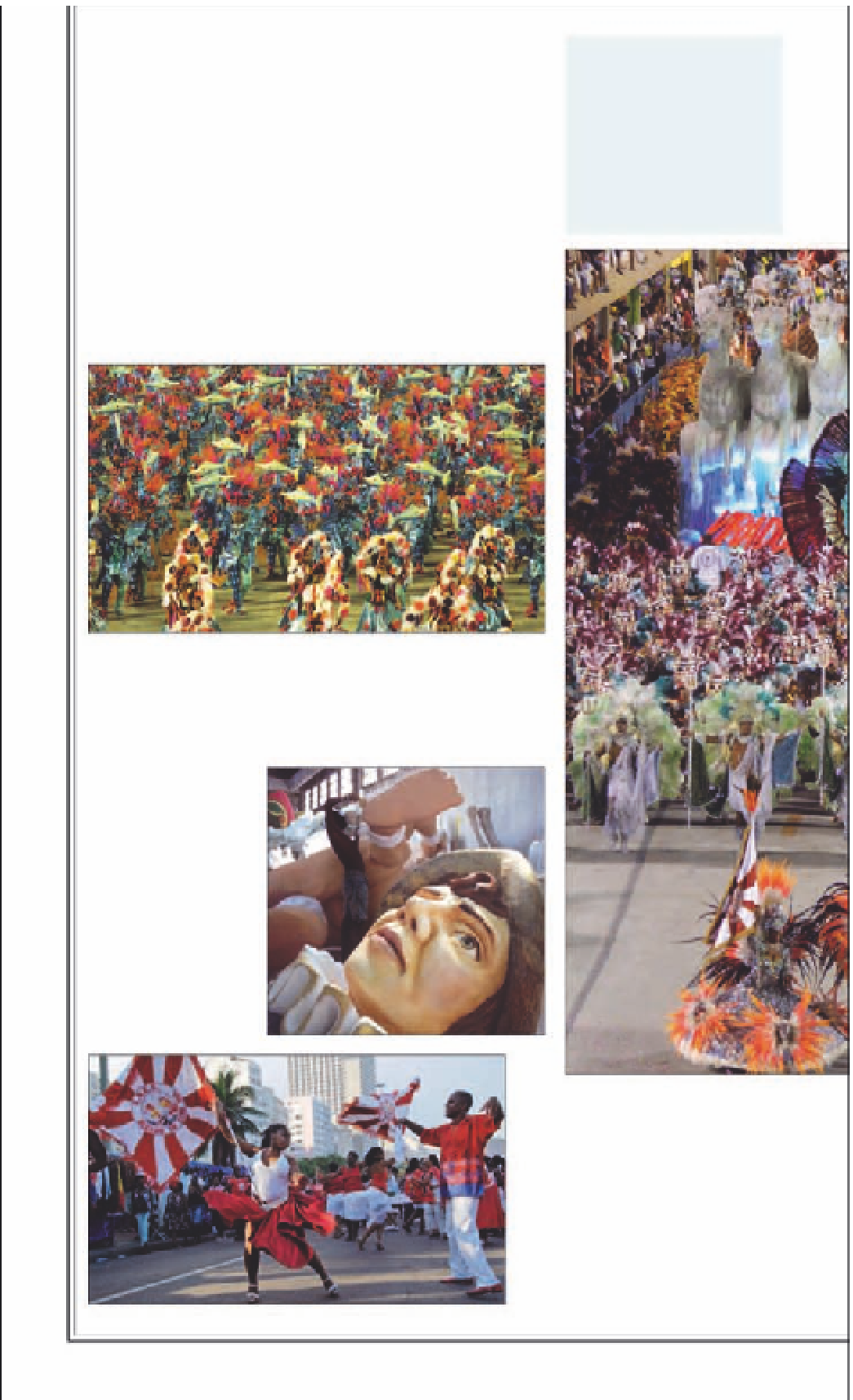Travel Reference
In-Depth Information
Carnaval in Rio
One of the world's most spectacular festivals, Carnaval
is celebrated all over Brazil, but the celebrations in
Rio are justly famous. They remain unmatched for
their sheer scale and splendor. Falling in the first
days of February or March, Carnaval derives its origin
from religion, and it is linked to the calendar of the
Catholic Church. Traditionally, Carnaval is the last
celebration of excess and joy before the austerity and
fasting of the Lenten period. Its key elements include
street celebrations, carnival balls, and the world-
famous parade of top
samba
schools, which tradition-
ally takes place at the Sambódromo in downtown Rio.
CARNAVAL DATES
2011
March 6
2012
February 19
2013
February 10
2014
March 2
2015
February 13
2016
February 7
2017
February 26
2018
February 11
Samba schools
are large social clubs found in Rio's poorer
communities and neighborhoods, often linked to the local
favelas
. Mangueira, one of the most prominent schools, was
founded in 1928, and Portela, which began in 1923, has
won the most Carnaval titles. Many top schools date from the
1940s and 50s, while Grande Rio formed as late as 1988.
Giant puppets
are put
together to decorate the
floats and fascinating
costumes are created
for the participants.
Craftspeople work
throughout the year, as
Carnaval is a year-
round industry. Much
of the work can now
be seen at close quarters
in the Cidade de Samba
in downtown Rio.
Porta bandeira
is the school's
standard bearer, dressed in lavish
18th-century formal wear, regardless
of the school's theme.
Street carnivals
take place wherever
there is a band that can strike up
a
samba
and move around the streets.
Bands attract a large following
who dance and sing through the
neighborhoods.



































